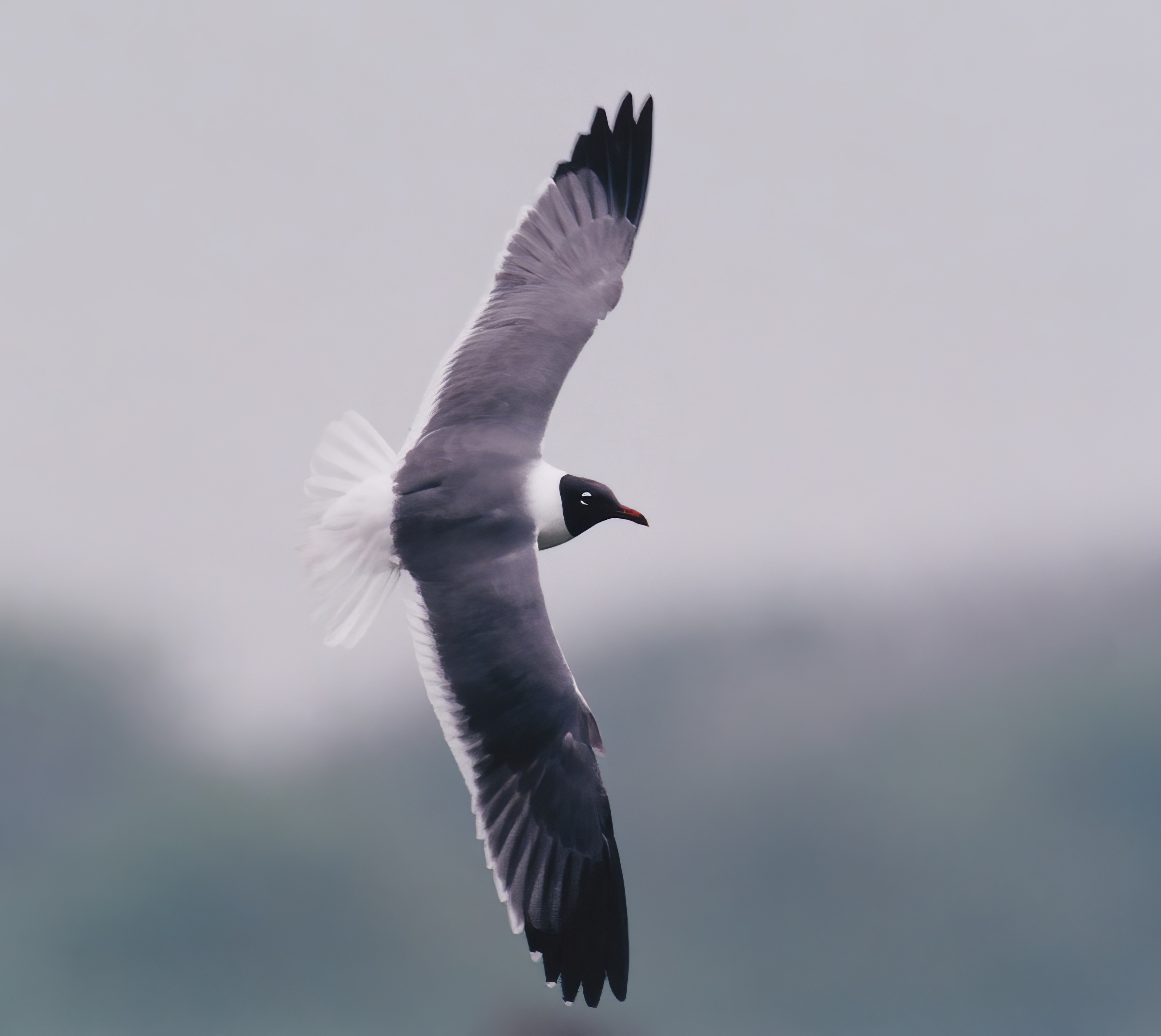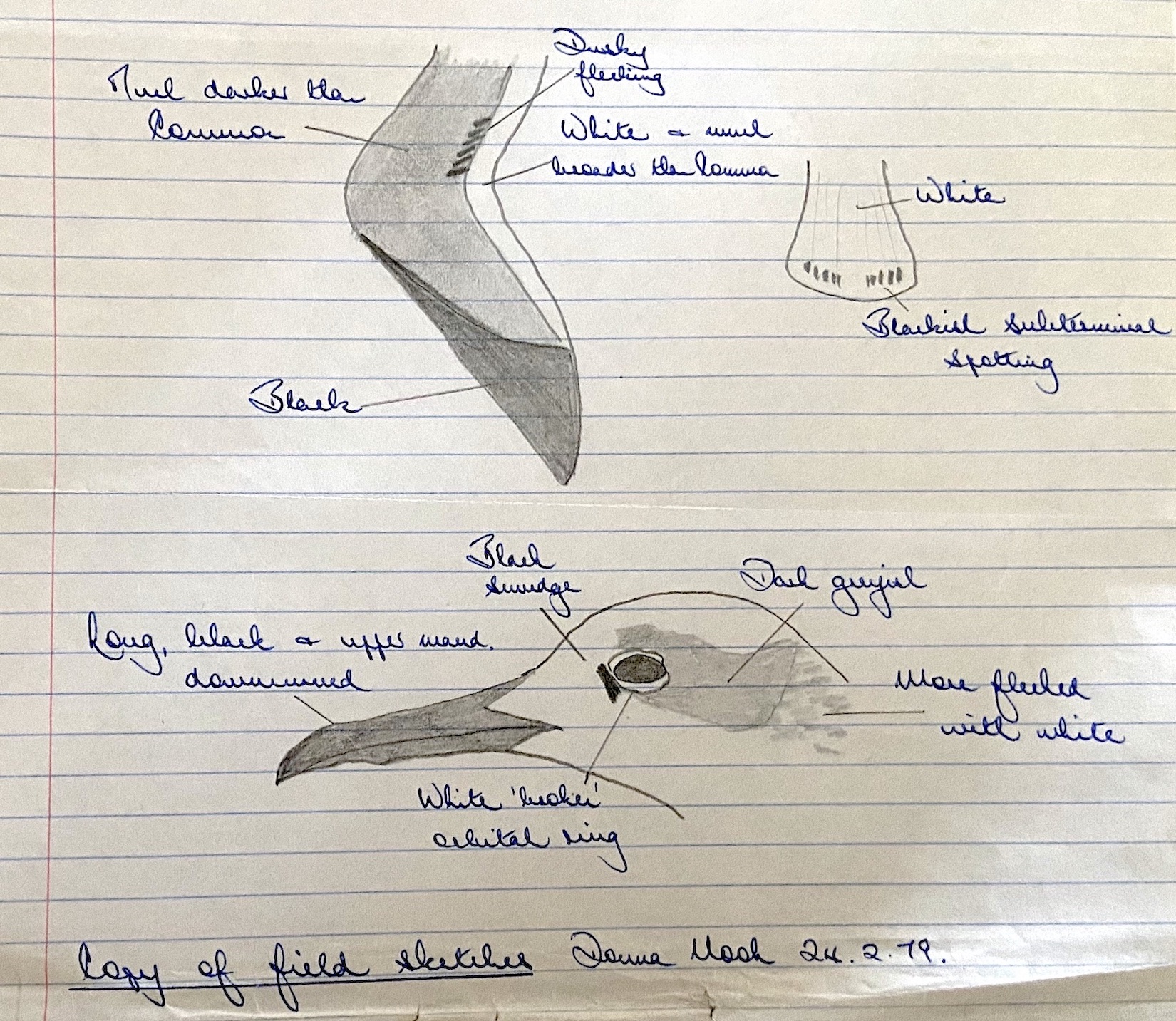Laughing Gull Leucophaeus atricilla

Adult Laughing Gull, May 1998, Norfolk (Dr. Iain Leach). This is the bird which also briefly visited Kirkby GP May 24th.
The first two records of Laughing Gull in Lincolnshire were both in 1979, firstly a 3CY bird at Donna Nook on 24th February and secondly a 1CY bird at Huttoft Bank on October 6th. These were the only two records in Britain that year.
Curiously, there were also two records in 1984, although these relate to the same individual that crossed the Humber during an extended stay in East Yorkshire. This bird was first seen in East Park, Hull on April 16th, then at Thorpe Pits, near Lincoln on May 23rd. It was then relocated feeding with Black-headed Gulls in Hull Town Centre on November 9th and remained in the area until at least December 27th. It then ventured over the Humber once again to makes its second appearance in Lincolnshire when it was seen at Barton-on-Humber on December 28th.
The last record in 1998 was an adult in summer plumage briefly at Kirkby-on-Bain Gravel Pits on May 24th. It was considered to be the same long-staying bird from North Norfolk seen from 9th May into June in the Burnham Norton, Holme, Hunstanton and Titchwell areas; it was also seen displaying in the Black-headed Gull L. ridibundus colony at Titchwell and later coming regularly to bread in Hunstanton town centre.
| Site | First date | Last date | Count | Notes |
| Donna Nook | 24/02/1979 | - | 1 | 3CY |
| Huttoft Bank | 06/10/1979 | - | 1 | 1CY |
| Thorpe on the Hill | 23/05/1984 | - | 1 | 2CY |
| Barton upon Humber | 28/12/1984 | - | 1 | Same as Thorpe bird, 2CY |
| Cleethorpes | 21/10/1997 | - | 1 | Adult |
| Kirkby GP | 24/05/1998 | - | 1 | Adult |
Finder’s report: Laughing Gull at Donna Nook, February 24th, 1979: first county record
by S. Lorand
Note: this account is taken from the original Rarities Committee submission. At the time, this species had now occurred in five of the last six years. The total number of British records to 1979 was 18.
Circumstances
At 12.00 hr. I was walking along the tide edge looking at gulls which were fairly evenly scattered along much of the shore and sand-flats, when my attention was attracted to a most unusual-looking bird. Fortunately, none of the gulls was particularly flighty and most were casually flying off to the north, only upon approach, so I was able to advance upon the bird within about 40 yd. It was not in close association with any of the other Common or Herring Gulls, in fact most birds were in ones and twos or very small parties. It was slightly smaller than the nearby Common Gulls, much slenderer and with very long wings projecting well beyond the tail. After it took to flight it continued to fly north until out of sight and despite extensive coverage of a long stretch of shoreline on the following morning, I did not find it again.
Weather conditions and visibility were good with a variable N/ENE wind, force 1, 2/8-5/8 cloud cover and with no rain or mist. The bird was viewed through 10x40 binoculars for around 10 minutes.
Description
Head – different in shape, being relatively smaller and less rounded than Common, with the forehead more flattened and hence less steeply angles to the bill. The head had a distinctive appearance; the forepart was white, with a small blackish smudge in front of the dark eye with prominent ‘broken’ orbital ring. Ear coverts dark grey becoming more flecked with white towards back of head.
Upperparts – grey, much darker than Common Gull, broad white area on tertials contrasting with black primaries. Tail not visible at rest, but in flight was wholly white except for a line of blackish subterminal spotting on either side. In flight the wings were strikingly dark grey with black outer primaries, primary coverts, and median coverts. White trailing edge of the wing was much broader than any of the Common Gulls, but it did not extend to the outer primaries which were all black. A short bar present on the outer secondaries was formed by dusky flecking bordering the white trailing edge.
Underparts - sides of breast and flanks clouded grey, remainder of underparts white.
Bare parts - the most striking feature of this bird were its long, black legs and long black bill, with a distinct downward curve of the upper mandible.

Field sketches of the Laughing Gull at Donna Nook, February 24th 1979, photographed from the original BBRC submission by Steve Lorand.
(Account prepared November 2018; includes all records to 2017)

